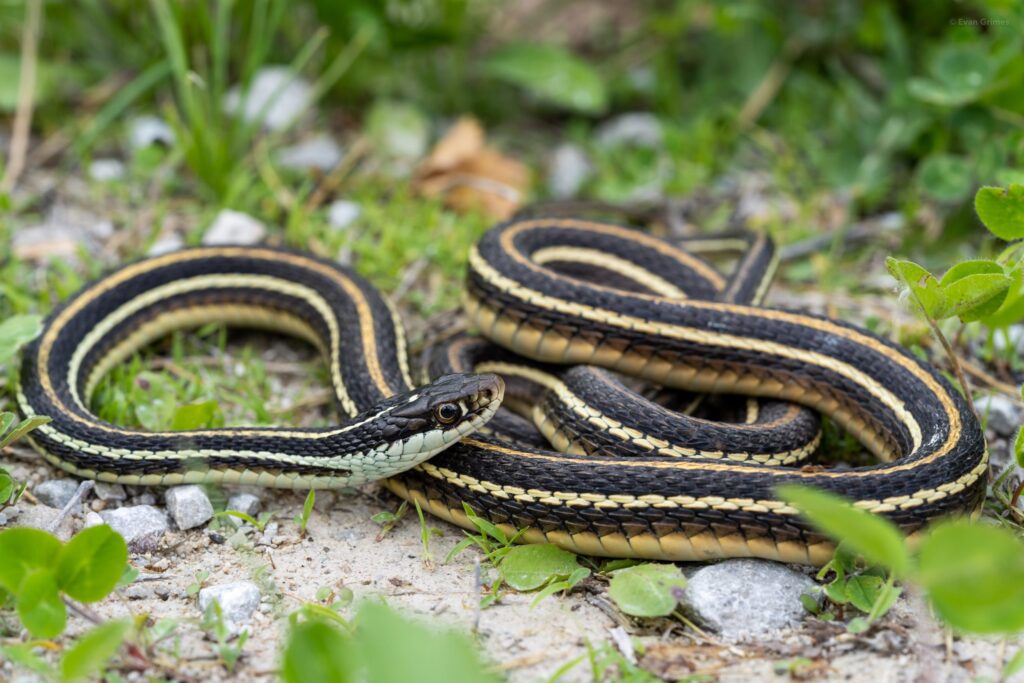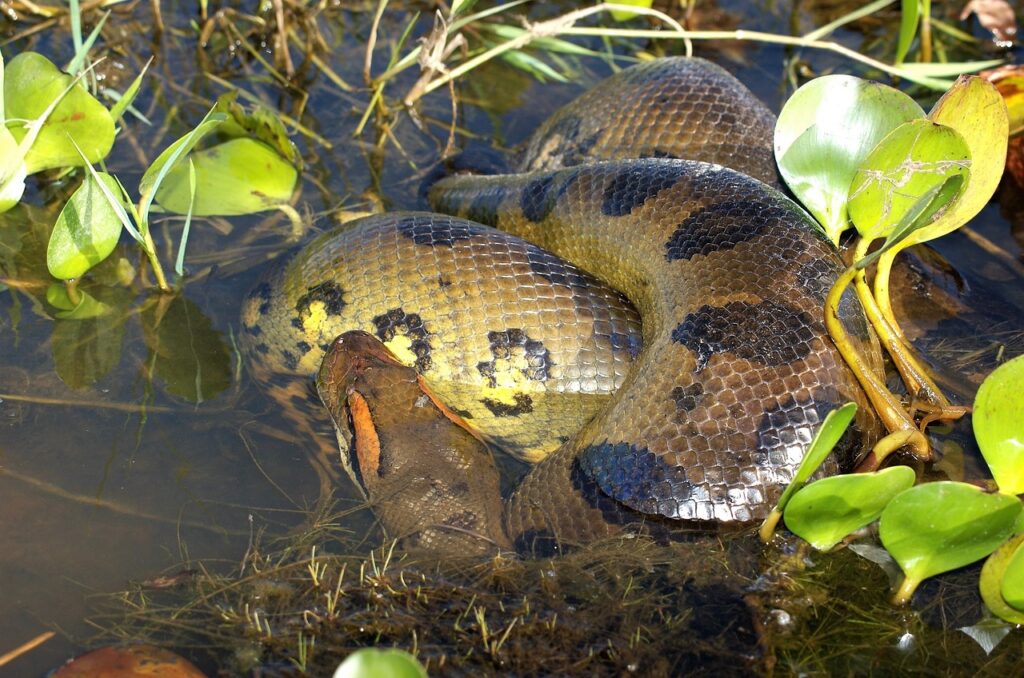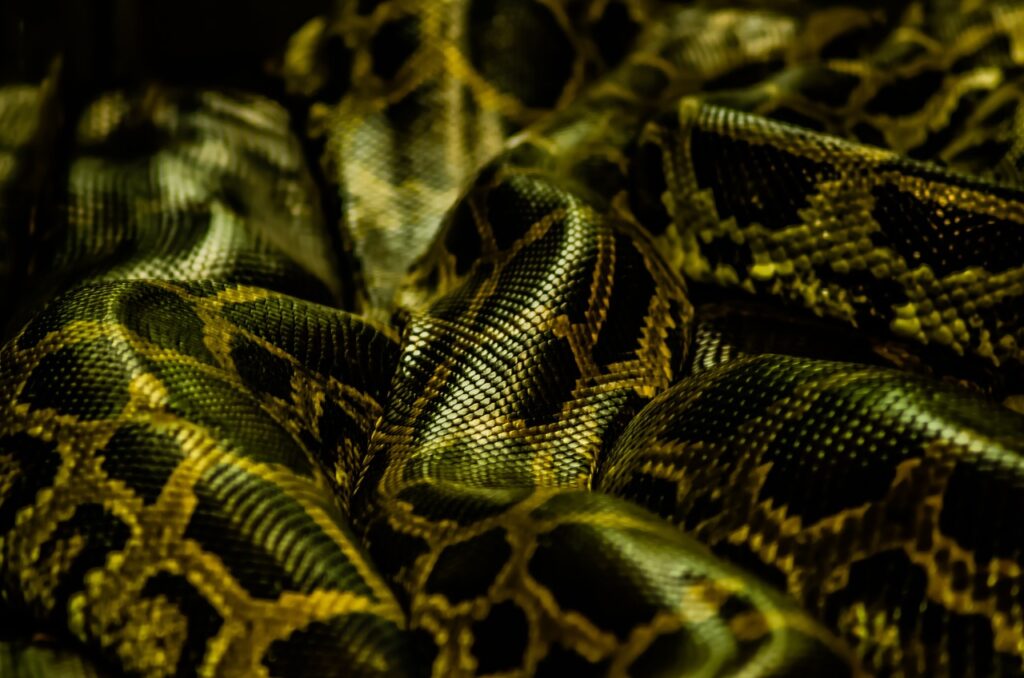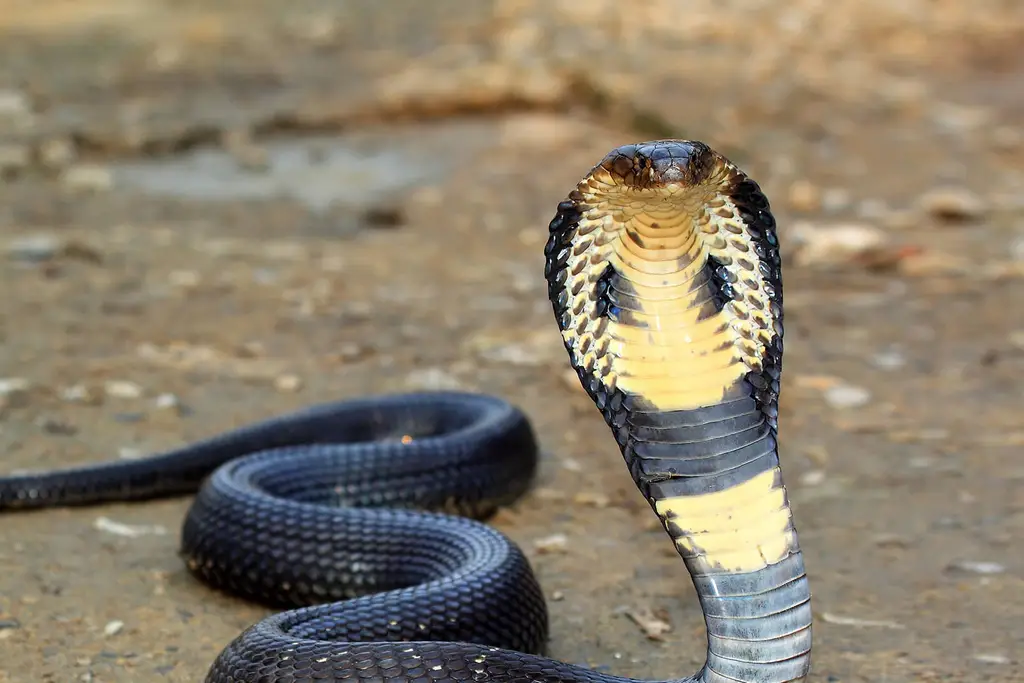Are you fascinated by the diverse diet of snakes? If so, you’ll be intrigued to learn about the incredible variety of snakes that have a particular taste for fish.
In this article, you’ll explore the fascinating world of snakes that consider fish their preferred meal. From the non-venomous Garter Snake, Ribbon Snake, and Grass Snake, to the larger and more intimidating Anaconda and Python, these snakes exhibit unique hunting behaviors and impressive feeding habits.
Get ready to delve into the remarkable world of snakes with a fishy appetite.
Key Takeaways
- Anacondas, Pythons, and Boa Constrictors are large snakes that eat fish when they are young, but prefer mammals when they mature.
- Sea Kraits and King Cobras are venomous snakes that also eat fish as part of their diet.
- The Cottonmouth, also known as the water moccasin, is a venomous snake that hunts and feeds on fish.
- The Grass Snake and Northern Water Snake are non-venomous snakes that mainly feed on amphibians and small fish.
Non-Venomous Snakes That Eat Fish
If you’re interested in non-venomous snakes that eat fish, you’ll be fascinated to learn about the garter snake, ribbon snake, and grass snake. These snakes have a significant impact on fish populations as they consume various fish species. The garter snake, for instance, is known to consume small fish such as minnows and sticklebacks. The ribbon snake, on the other hand, preys on small fish like sunfish and darters. Lastly, the grass snake feeds on amphibians and small fish, including species like trout and perch.


The consumption of fish by these non-venomous snakes can have both positive and negative effects on fish populations. On one hand, these snakes help control the population of small fish by feeding on them, preventing overpopulation. This, in turn, can benefit larger fish species by reducing competition for resources. On the other hand, if the snake population becomes too large or if there’s a decrease in their natural prey, they may start to heavily rely on fish as a food source. This can potentially lead to a decline in certain fish species and disrupt the balance of aquatic ecosystems.
Understanding the impact of non-venomous snakes that eat fish on fish populations and the specific fish species consumed is crucial for the conservation and management of aquatic ecosystems. By studying these interactions, scientists can develop strategies to maintain a healthy balance between predator and prey, ensuring the long-term sustainability of fish populations.
Large Snakes That Consume Fish
Large snakes such as Anacondas, Pythons, and Boa Constrictors that consume fish have unique adaptations that allow them to effectively catch and consume their aquatic prey. These adaptations include streamlined bodies, powerful jaws, and specialized teeth for gripping and swallowing fish.
The predation of large snakes on fish can have an impact on fish populations, especially in areas where these snakes are abundant. Understanding the feeding habits and ecological role of large fish-eating snakes is crucial for maintaining the balance of aquatic ecosystems.


Fish-Eating Snake Adaptations
One key adaptation of large snakes that consume fish is their ability to swallow prey whole. This allows them to capture and consume fish efficiently, without the need for tearing or chewing.
Other adaptations for catching fish include:
- Elongated bodies: Large fish-eating snake species, such as the Anaconda and Python, have long, slender bodies that enable them to maneuver through water with ease. This streamlined shape helps them to swiftly chase and capture fish.
- Powerful jaws: These snakes have strong jaws that can grip onto slippery fish, preventing their prey from escaping. This adaptation allows them to maintain a secure hold on their prey, even in water.
- Expandable stomachs: To accommodate the size of their fish prey, large snakes have highly expandable stomachs. This allows them to swallow fish whole, without causing any harm to their internal organs.
- Hydrodynamic scales: The scales of fish-eating snakes are specially adapted to reduce drag in water. These smooth and overlapping scales enable the snakes to move effortlessly through the aquatic environment.
- Camouflage: Many large snakes that consume fish have coloration and patterns that blend in with their aquatic surroundings. This helps them to remain hidden from their prey and approach them undetected.
Impact on Fish Populations
The impact of large snakes that consume fish on fish populations can be significant. These snakes possess unique fishing techniques that allow them to effectively prey on fish, potentially leading to changes in fish population dynamics.
When large snakes consume fish, they directly remove individuals from the population, which can result in a decrease in fish abundance. Additionally, the predatory behavior of these snakes can cause changes in fish behavior, such as altered feeding patterns or avoidance of certain areas, further influencing fish populations.
Moreover, the presence of large snakes can create a predator-prey dynamic, where fish populations may experience increased predation pressure and adapt their behaviors to avoid being consumed.
Understanding the impact of large snakes on fish populations is essential for maintaining the balance and resilience of aquatic ecosystems.
Venomous Snakes That Prey on Fish
If you’re interested in venomous snakes that prey on fish, you’ll be fascinated by the hunting abilities of sea kraits and cottonmouths. These snakes have unique adaptations that allow them to effectively capture and consume fish, making a significant impact on fish populations in their habitats.

Here are some details about the fish species consumed by these snakes:
- Sea Kraits: These highly venomous snakes are known for their aquatic lifestyle. They primarily feed on a variety of fish species, including small octopuses, eels, squids, and crabs. Their venomous bite immobilizes their prey, making it easier for them to swallow.
- Cottonmouths: Also known as water moccasins, cottonmouths are opportunistic feeders that inhabit freshwater environments. They’ve a preference for fish and will actively hunt them. Their venom is potent, and it helps them subdue their prey before consuming it.
- Banded Water Snake: While often mistaken for cottonmouths, these non-venomous snakes also feed on fish. They primarily consume frogs and fish, making them an important predator in aquatic ecosystems.
- Northern Water Snake: Another non-venomous snake that preys on fish, the northern water snake has a diverse diet that includes various fish species. They’re often mistaken for cottonmouths due to their similar appearance.
- King Cobra: Although not exclusively a fish predator, the king cobra is known to include fish in its diet. This venomous snake primarily feeds on small vertebrates, birds, and other snakes, but fish can be an occasional part of its menu.
These snakes play a crucial role in regulating fish populations in their habitats. By preying on fish, they help maintain a balance in aquatic ecosystems, ensuring the survival of other species.
Fascinating Facts About Snakes’ Eating Habits
Get ready to discover some fascinating facts about how snakes eat!
When it comes to non-venomous fish-eating snakes, they’ve developed unique fishing techniques to catch their prey. Sea snakes, for example, are known for their ability to hunt and feed on fish underwater. These snakes have adapted to their aquatic environment by having a flattened tail and paddle-shaped scales, which help them swim efficiently. They use their powerful muscles and strong jaws to capture fish, using a combination of stealth and speed. Sea snakes can subdue their prey by injecting venom, which immobilizes the fish and allows the snake to consume it.
Another interesting fact about snakes’ eating habits is that some snakes, such as the boa constrictor, use constriction to kill their prey. These snakes coil their bodies around the prey and squeeze tightly, cutting off blood flow and causing suffocation. Once the prey is dead, the snake will swallow it whole, using its flexible jaw and stretchy ligaments to accommodate the size of the prey.
Snakes truly have remarkable adaptations and strategies when it comes to their eating habits.
Miscellaneous Information About Snake Diets
Have you ever wondered what other types of food snakes can eat besides fish? While fish make up an important part of many snake diets, there are also non-venomous fish-eating snakes that have a significant impact on aquatic ecosystems. Here are some miscellaneous facts about snake diets:
- Garter Snake, Ribbon Snake, and Grass Snake are non-venomous snakes that consume a variety of prey including earthworms, slugs, frogs and their eggs, rodents, amphibians, and small fish.
- Anaconda, Python, and Boa Constrictor are large snakes that have diverse diets. Anacondas, the largest snakes in the world, eat fish when young but prefer mammals as they mature. Pythons, including the popular ball python, are better suited to consuming mammals than fish. Boa constrictors, ambush predators, consume medium-sized mammals, birds, fish, lizards, amphibians, and bats.
- Cottonmouth and Banded Water Snake are venomous snakes that primarily hunt fish. Cottonmouths, also known as water moccasins, are opportunistic feeders and can grow up to four feet in length. Banded Water Snakes, often mistaken for cottonmouths, consume frogs and fish and are endemic to the United States.
- Sea Krait and King Cobra are venomous snakes that have fish as part of their diet. Sea Kraits prey on small octopuses, eels, squids, and crabs and are closely related to cobras. King Cobras consume fish, small vertebrates, birds, and even other snakes. They’re capable of surviving for months without eating.
- Northern Water Snake is a non-venomous snake that feeds on different types of fish and amphibians. They can grow up to 4.5 feet in length and are often mistaken for water moccasins due to their appearance.
These non-venomous fish-eating snakes play a crucial role in aquatic ecosystems by helping to regulate fish populations and maintaining a balanced food web. Their diets contribute to the overall health and biodiversity of these ecosystems.
Conclusion: Snakes and Their Diverse Fish-Eating Habits
These snakes with sideways movement and a diet that includes fish play a vital role in the delicate balance of ecosystems, particularly in regulating fish populations and maintaining the overall health of aquatic environments.
Snakes have evolved various adaptations that allow them to effectively capture and consume fish. For example, the ribbon snake, grass snake, and banded water snake possess long, slender bodies and powerful jaws that enable them to swiftly strike and seize their slippery prey. Additionally, these snakes have sharp, recurved teeth that aid in securing the fish and preventing escape.
The impact of fish-eating snakes on fish populations is significant. By preying on fish, these snakes help control the abundance of certain species, preventing overpopulation and competition for resources. This, in turn, allows other organisms in the ecosystem to thrive. Furthermore, fish-eating snakes contribute to nutrient cycling by consuming fish and releasing valuable nutrients back into the environment through their waste.
In addition to their role in regulating fish populations, fish-eating snakes also contribute to the overall health of aquatic environments. By consuming sick or diseased fish, they help prevent the spread of pathogens within fish populations. This helps maintain the ecological balance and ensures the long-term stability of the ecosystem.
Frequently Asked Questions
Can Non-Venomous Snakes That Eat Fish Also Consume Other Types of Prey?
Non-venomous snakes that eat fish can consume other types of prey, depending on their species and habitat. However, the impact of fish consumption on snake digestion may vary, as different prey items have different nutritional and digestive requirements.
What Is the Largest Fish Ever Consumed by a Large Snake?
The largest fish ever consumed by a large snake is typically found in the diet of anacondas. These massive snakes, when young, feed on fish before transitioning to mammals as they mature.
Are There Any Venomous Snakes That Exclusively Feed on Fish?
Yes, there are venomous snakes that exclusively feed on fish. These snakes have adaptations like fangs and venom glands which they use to catch and subdue their aquatic prey.
How Do Sea Snakes Catch and Consume Fish?
Sea snakes locate and capture their fish prey through their predatory behavior. They have unique adaptations for fish consumption, such as specialized jaws and long, slender bodies that enable them to swiftly swim and catch fish.
Do All Species of Fish-Eating Snakes Have Similar Hunting Techniques?
Fish-eating snakes have varying hunting techniques and prey preferences. Some, like ribbon snakes and grass snakes, prey on small fish, while others, like sea kraits and king cobras, also consume fish but have broader diets.

Erzsebet Frey (Eli Frey) is an ecologist and online entrepreneur with a Master of Science in Ecology from the University of Belgrade. Originally from Serbia, she has lived in Sri Lanka since 2017. Eli has worked internationally in countries like Oman, Brazil, Germany, and Sri Lanka. In 2018, she expanded into SEO and blogging, completing courses from UC Davis and Edinburgh. Eli has founded multiple websites focused on biology, ecology, environmental science, sustainable and simple living, and outdoor activities. She enjoys creating nature and simple living videos on YouTube and participates in speleology, diving, and hiking.
🌿 Explore the Wild Side!
Discover eBooks, guides, templates and stylish wildlife-themed T-shirts, notebooks, scrunchies, bandanas, and tote bags. Perfect for nature lovers and wildlife enthusiasts!
Visit My Shop →